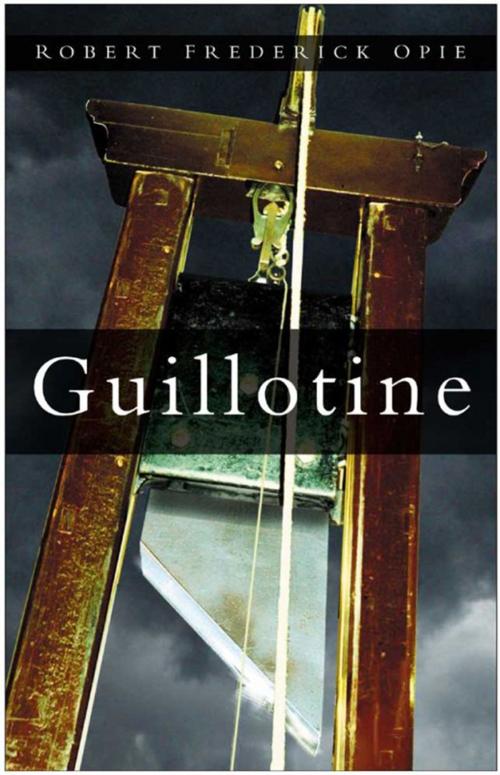Guillotine
Nonfiction, Social & Cultural Studies, Social Science, Crimes & Criminals, Penology, History, France| Author: | Robert Frederick Opie | ISBN: | 9780752496054 |
| Publisher: | The History Press | Publication: | March 27, 1997 |
| Imprint: | The History Press | Language: | English |
| Author: | Robert Frederick Opie |
| ISBN: | 9780752496054 |
| Publisher: | The History Press |
| Publication: | March 27, 1997 |
| Imprint: | The History Press |
| Language: | English |
The guillotine is undoubtedly the most potent image of revolutionary France, the tool whereby a whole society was 'redesigned'. Yet, what came to be seen as an instrument of terror was, paradoxically, introduced as the result of the humanitarian feelings of men intent on revising an ancient and barbaric penal code. Robert Frederick Opie takes us on a fascinating and sometimes terrifying journey through the narrow streets of eighteenth-century Paris and beyond. Initially scorned by the revolutionary mob for being insufficiently cruel, the swift and efficient guillotine soon became the darling of the crowd, despatching as many as sixty people a day beneath its blade. But the Razor of the Nation was to remain the chosen instrument of capital punishment until the 1970s, only finally being banned in 1981. "Guillotine: The Timbers of Justice" traces the development of the guillotine over nearly two centuries, recounting the stories of famous executions, the lives of the executioners and the scientific research into whether the head retained consciousness after it was separated from the body that continued into the 1950s. This is a gruesomely interesting tale, rich in detail and teeming with extraordinary personalities. It is a very human history, recounting some of the most diabolical uses of human inventiveness, and also some of the most touching pleas for mercy.
The guillotine is undoubtedly the most potent image of revolutionary France, the tool whereby a whole society was 'redesigned'. Yet, what came to be seen as an instrument of terror was, paradoxically, introduced as the result of the humanitarian feelings of men intent on revising an ancient and barbaric penal code. Robert Frederick Opie takes us on a fascinating and sometimes terrifying journey through the narrow streets of eighteenth-century Paris and beyond. Initially scorned by the revolutionary mob for being insufficiently cruel, the swift and efficient guillotine soon became the darling of the crowd, despatching as many as sixty people a day beneath its blade. But the Razor of the Nation was to remain the chosen instrument of capital punishment until the 1970s, only finally being banned in 1981. "Guillotine: The Timbers of Justice" traces the development of the guillotine over nearly two centuries, recounting the stories of famous executions, the lives of the executioners and the scientific research into whether the head retained consciousness after it was separated from the body that continued into the 1950s. This is a gruesomely interesting tale, rich in detail and teeming with extraordinary personalities. It is a very human history, recounting some of the most diabolical uses of human inventiveness, and also some of the most touching pleas for mercy.















